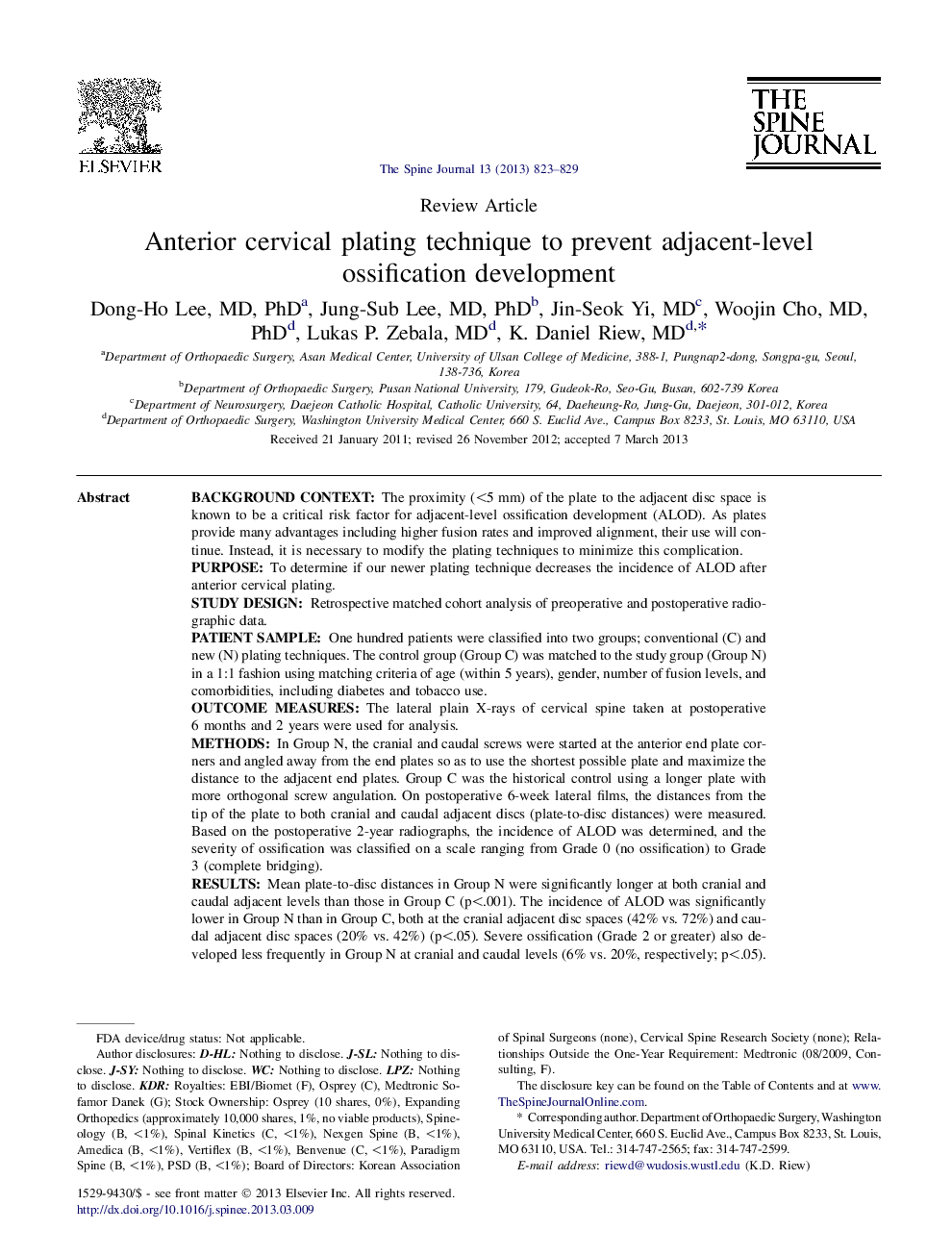| Article ID | Journal | Published Year | Pages | File Type |
|---|---|---|---|---|
| 6212559 | The Spine Journal | 2013 | 7 Pages |
Background contextThe proximity (<5 mm) of the plate to the adjacent disc space is known to be a critical risk factor for adjacent-level ossification development (ALOD). As plates provide many advantages including higher fusion rates and improved alignment, their use will continue. Instead, it is necessary to modify the plating techniques to minimize this complication.PurposeTo determine if our newer plating technique decreases the incidence of ALOD after anterior cervical plating.Study designRetrospective matched cohort analysis of preoperative and postoperative radiographic data.Patient sampleOne hundred patients were classified into two groups; conventional (C) and new (N) plating techniques. The control group (Group C) was matched to the study group (Group N) in a 1:1 fashion using matching criteria of age (within 5 years), gender, number of fusion levels, and comorbidities, including diabetes and tobacco use.Outcome measuresThe lateral plain X-rays of cervical spine taken at postoperative 6Â months and 2 years were used for analysis.MethodsIn Group N, the cranial and caudal screws were started at the anterior end plate corners and angled away from the end plates so as to use the shortest possible plate and maximize the distance to the adjacent end plates. Group C was the historical control using a longer plate with more orthogonal screw angulation. On postoperative 6-week lateral films, the distances from the tip of the plate to both cranial and caudal adjacent discs (plate-to-disc distances) were measured. Based on the postoperative 2-year radiographs, the incidence of ALOD was determined, and the severity of ossification was classified on a scale ranging from Grade 0 (no ossification) to Grade 3 (complete bridging).ResultsMean plate-to-disc distances in Group N were significantly longer at both cranial and caudal adjacent levels than those in Group C (p<.001). The incidence of ALOD was significantly lower in Group N than in Group C, both at the cranial adjacent disc spaces (42% vs. 72%) and caudal adjacent disc spaces (20% vs. 42%) (p<.05). Severe ossification (Grade 2 or greater) also developed less frequently in Group N at cranial and caudal levels (6% vs. 20%, respectively; p<.05).ConclusionsThe new technique of using a shorter plate with longer angulated screws resulted in significantly reduced incidence and severity of ALOD.
